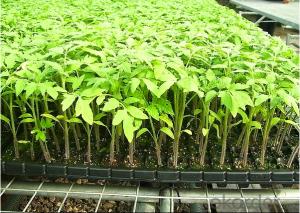Pipes and fittings are the backbone of any plumbing system, and when it comes to choosing the right materials, plastic has become a popular choice for many homeowners and professionals alike. In this article, we’ll explore the world of plastic pipes and fittings, discussing their benefits, types, and how to work with them in a fun and engaging way.
The Appeal of Plastic Pipes
Plastic pipes have a certain charm that’s hard to resist. They’re lightweight, easy to handle, and can be a cost-effective option for many plumbing projects. Whether you’re a DIY enthusiast or a seasoned plumber, there’s a lot to love about these versatile pipes.
Lightweight and Easy to Maneuver
One of the first things you’ll notice about plastic pipes is just how easy they are to work with. They’re not going to weigh you down like their metal counterparts, making them a favorite for those long plumbing jobs.
Cost-Effective and Budget-Friendly
Let’s face it, plumbing can be expensive. But with plastic pipes, you’re looking at a more budget-friendly option that doesn’t sacrifice quality. They’re a great choice for those who want to save a few bucks without skimping on performance.
Versatility in Applications
Plastic pipes can be used for a variety of applications, from residential homes to commercial buildings. They’re suitable for both hot and cold water systems, and even some specialized applications like sprinkler systems.
Types of Plastic Pipes and Fittings
When you dive into the world of plastic pipes, you’ll find a colorful array of options. Each type has its own set of characteristics and ideal uses. Let’s take a closer look at some of the most common types you might encounter.
Polyvinyl Chloride (PVC)
PVC is a common type of plastic pipe used in residential and commercial plumbing. It’s known for its durability and resistance to chemicals, making it a top choice for many plumbers.
Chlorinated Polyvinyl Chloride (CPVC)
CPVC is a step up from PVC in terms of heat resistance. It’s often used in hot water systems and can handle higher temperatures than PVC.
Polyethylene (PE)
Polyethylene pipes are favored for their flexibility and resistance to corrosion. They’re often used for underground water supply lines and are a popular choice for their ease of installation.
Polypropylene (PP)
PP pipes are known for their resistance to both chemicals and corrosion. They’re often used in water supply systems and can be a great option for those looking for a long-lasting solution.
Working with Plastic Pipes and Fittings
Now that you know a bit about the different types of plastic pipes and fittings, let’s talk about how to work with them. It’s not as daunting as it might seem, and with a few tips, you’ll be a pro in no time.
Cutting Plastic Pipes
Cutting plastic pipes requires a bit of finesse. You’ll want to use a fine-tooth saw or a pipe cutter to ensure a clean, precise cut. And remember, measure twice, cut once!
Joining Fittings
Joining plastic fittings can be a bit tricky, but with the right tools and a little patience, you’ll get the hang of it. You’ll need a few basic tools like a wrench and possibly a heating tool for certain types of connections.
Sealing Joints
One of the most important parts of working with plastic pipes is sealing the joints properly. This is where the rubber meets the road, or in this case, where the pipes meet the fittings. You’ll need to use appropriate sealants and follow the manufacturer’s instructions to ensure a leak-free connection.
Maintenance and Troubleshooting
Plastic pipes are generally low maintenance, but like any plumbing system, they can run into issues from time to time. Here are a few tips to keep your plastic pipes in tip-top shape.
Regular Inspections
It’s a good idea to give your plumbing system a regular check-up. Look for any signs of wear, damage, or leaks, and address them as soon as possible.
Cleaning and Descaling
Over time, mineral deposits can build up inside your pipes, reducing water flow and potentially causing blockages. Regular cleaning and descaling can help prevent this.
Addressing Leaks Promptly
If you do happen to spot a leak, don’t panic. Identify the source and take the necessary steps to fix it. This might involve tightening connections, replacing a damaged pipe, or calling in a professional if the issue is beyond your expertise.
The Future of Plastic Pipes
As technology advances, so does the world of plumbing. Plastic pipes are continually being improved and developed to meet the evolving needs of homeowners and businesses. From new installation techniques to innovative materials, the future looks bright for plastic pipes.
In conclusion, plastic pipes and fittings offer a world of possibilities for your plumbing projects. They’re not just a practical choice, but one that can also add a touch of personality and flair to your home or business. So, the next time you’re faced with a plumbing decision, don’t be afraid to consider the plastic option. It might just be the perfect fit for you!

